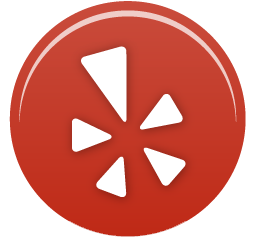Intentional JOY
Three main points
- Millions of Americans are so stressed, anxious, or overwhelmed that they distract themselves with addictive behaviors – everything from overeating to shopping to internet porn.
- These “Lite” addictions are quick-fix habits that temporarily smoothe the edges from stress, anxiety, and the intense pace of modern life. The problem is that these addictive habits both block joy and aliveness and re-wire the brain for more of the same. Over time, these habits can become hard addictions – especially for those with a genetic predisposition.
- Mind-body practices such as TARA (a quick emotional identification/release process), Emotional Freedom Technique, and guided imagery interrupt the fight-flight stress response and increase the relaxation response. As the connection is strengthened between mind, body, and spirit, a sense of aliveness and vitality are experienced more frequently, and freedom from external solutions leads to JOY.
Q:What setsIntentional JOYapart from other self-help books about addiction?
A:Intentional JOYis for the millions of Americans who are so stressed or anxious that they have reached for the closest piece of chocolate or run to the corner for a latté to make themselves feel better. They don’t think of themselves as addicts, and they’re not. These are normal people who feel overwhelmed and exhausted. They seek to distract themselves, or make themselves feel better, not only with a glass of wine or a hit of pot, but with shopping, internet porn, fast food, and a myriad of other “lite” addictions.
“Lite” addictions are used to curb the stress and anxiety that permeate modern life. These sometimes-guilty pleasures help avoid pain or offer reward for hard work. But while they can feel like a “fix” temporarily, they create additional suffering as they become habits and rob people of the joy, fulfillment, and connection that adds meaning and satisfaction to life.
The author shares from her own experience in a “been there, done that” authentic and heart-felt style that invites and encourages the reader to know that changing stress habaits is both doable and enjoyable.
Q:How are stress and anxiety a set-up for addiction?
A:Stress and anxiety wear us down and make us vulnerable to reaching for the quick-fix relief advertisers love to tell us will make us feel better fast. While only a fairly small percentage will move into full blown addiction, many are blindly using products or behaviors that actually increase stress and anxiety while diminishing happiness and life satisfaction because these behaviors aren’t nourishing for mind, body or spirit.
Meet Martha. Martha is tired, very tired. She’s also grumpy, overweight, sleep deprived and just wants to get through one more day. Martha is 40, has two teenagers and works as a personnel director for a large county office. Last summer her mother had a stroke. Before her mother’s stroke she walked three or four days a week. Now she can’t find the time. She’s overwhelmed and anxious and she drinks lots of coffee.
From her morning wake-up cup to the afternoon pick-me-up Martha thinks she’s harmlessly boosting her energy and giving herself a little treat. But the 600 milligrams of coffee she drinks each day are causing insomnia, stomach problems, heart palpitations and anxiety. Martha doesn’t think of herself as a caffeine addict, but according to Stephen Cherniske, author ofCaffeine Blues, anything over 600 mg. is his definition of addict.
Q:What’s different about today’s brand of stress and anxiety compared to previous generations?
A:We are living in The Information Age where all information on the planet doubles every twelve months or less. The pace of change has accelerated the pace of life and our mind and body have not yet adapted. Technology both ameliorates and intensifies stress because of the time spent learning, using and managing it.
Dr. Pamela Peeke, M.D. states that stress becomes toxic when it accumulates and never allows the body to shut down the stress response. This can lead to self-destructive behaviors, i.e. overeating, shopping or substance problems.
Q:What are the top addictive behaviors people go to when stressed or anxious?
A:Overeating tops the list. One example is our fast food consumption. In 1970, Americans spent $6 billion dollars on fast food while in 2001 that multiplied by seven, with more than $110 billion being spent. Data from the National Center for Health Statistics indicate that 30% of adults in the U.S. are obese.
InI Shop, Therefore I Am, April Lane Benson, Ph.D., notes that likely 5 percent of the population in the United States are full-fledged compulsive shoppers. A Merck Family Fund poll found that 72 percent of Americans say people buy things as a substitute for something missing in their lives and 80 percent believe too many people are “addicted” to shopping.
Internet porn:Robert Wise, of Sexual Recovery Institute, Los Angeles, says 40 million Americans watch porn during a year and 10% to 15% of those are clearly addicted. Porn is a $10 billion industry in the U.S.
Q:Are you saying that the woman who runs to the mall after work because she’s stressed is an addict?
A:No. Shopping once in awhile to relieve stress can be fun and relaxing. It’s when there are negative consequences like debt, hiding purchases or relationship problems that indicate one should look at what’s driving the behavior.
In 2002, Myvesta, a web-based financial health center, conducted a random survey of 1,000 people and found 52 percent of those surveyed experienced mood changes before or after shopping. Myvesta found that 49 percent of them spend money to escape problems or relieve stress. Even more startling was that most women who were stopped on the way out of a department store didn’t even know what they had in their bags.
Q:How does someone know they have an addictive problem?
A:The following questions can be applied to any addictive problem – from shopping to alcohol or drug use. These questions should be non-judgmental and are designed to create awareness because with awareness comes greater choice.
For example with shopping: Why am I shopping? What is it I’m avoiding or trying to distract myself from? What am I really going for? Am I shopping because it gives me a high or rush of energy that I’m not receiving from my work, my relationships, or my hobbies? Am I shopping even when I can’t afford to? Has my shopping created a problem in my relationships? Do I hide my purchases from my spouse? Do I know how I’m feeling today? Am I feeling angry, sad, afraid or guilty – about what?
Q:Everyone gets stressed or anxious once in awhile but why are some more vulnerable to taking their “guilty pleasures” to the extreme?
A:We live in an addictive culture – more is better, especially regarding consumable goods. For example, the term, “competitive consumption” was coined by Juliet Schor, Sociology Professor in 1999. Let’s not forget President Bush’s statement about how Americans could help the nation after 9-11? “Shop.”
Anyone with a genetic predisposition to addiction is more vulnerable to having their “lite” addictive coping behaviors move along the continuum to a full-blown addiction.
True addiction is when an individual has lost control of their choice about whether to use or not use their “drug of choice.” Research shows that shopping addiction affects about 5% of the population. However, there are millions that are in extreme debt and with the current economy are faced with losing their lifestyle as a result of their past consumer behavior.
Q:How does creating more JOY in one’s life interrupt addictive behaviors and lead to freedom?
A:JOY, speaks to the aliveness, life satisfaction and meaning many are searching for in the wrong places. When I ask a client “What are you really going for when you’re smoking pot or drinking that third glass of wine?” Most state they’re trying to relax, avoid anxiety or feel happier. Stress and anxiety fuel reaching out for “something” to make them feel better now.
I teach people how to go within, breathe and connect with themselves by asking “How do I feel and what do I need?” These two simple questions connect us to our heart and create a very important PAUSE button between whatever stress or anxiety we’re experiencing and the habit of going for the pot, or the computer. As the automatic reaching for a quick-fix changes, trust in self is developed and there is greater peace and JOY. Addictive habits lessen or stop altogether.
Love, care, compassion and kindness rather than negativity, fear, pain and struggle feel better once they’ve become the habit. It takes time, but so does pain and struggle.
Q:What about your background makes you an expert on addiction?
A:My professional credentials include a Masters in Psychology with a Holistic Specialization. The three years masters program I attended at John F. Kennedy University in Orinda, CA was unique because of it’s early mind-body-spirit framework.
I became certified as an addiction counselor in 1989, have worked in the field since 1985 and have been in private practice since 1990. I’ve worked with all substance abuse and until recently focused my practice on women with weight concerns.
Personally, I come from a family of alcoholics and addicts. Thankfully, many of them are in recovery. I speak about my own early substance abuse and how the practices I share in the book have helped not only myself, but many hundreds of people create a more loving relationship with self and break the stress, anxiety cycle. I’ve had considerable counseling of my own, and have practiced The Course in Miracles since 1985. I am trained in and use all the mind-body practices presented inIntentional JOY.
Q:What is the solution that prevents stress and anxiety from leading to addictive problems?
A:Solutions arenotexternal (take another pill, build a bigger home, buy a better car). Simply put, the solution is love. Love sounds hokey, and we’re pretty confused about what love really means. The Random House dictionary defines only the type of love that’s focused on another. But I’m talking about healthy self-love, which is caring, kind and sets limits. Healthy love, like the best parenting is a combination of care and discipline.
Intentional JOYteaches that the solution is inside and one way to access more care and compassion for the self is with the three bodymind skills presented that are simple to learn, provide immediate relief, and with practice, can greatly improve life satisfaction.
Contact Info:
Lynn Telford-Sahl, M.A., C.A.C.
3430 Tully Road, Suite 20-284
Modesto, CA 95350
(209) 527-0798 Home
(209) 492-8745 Voice mail
Benson, April Lane.I Shop, Therefore I Am: Compulsive Buying & the Search for Self. Jason Aronson, 2000.
Haddock , Vicki. “Lessons in human buy-ology.” San Francisco Chronicle. Dec. 19, 2004.





